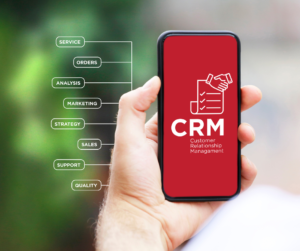The pandemic has hastened companies’ shift to the cloud. Because of this transition to remote work, businesses saw how they could depend on cloud technology and how it enabled workers in many industries to collaborate even when people work from the safety of their homes.
Still, some CEOs remain unconvinced at worst and hesitant at best to embrace cloud technology despite the benefits highlighted during the lockdowns. What are their reservations?
In a Harvard Business Review article, Accenture’s Bhaskar Ghosh and Karthik Narain answer five questions CEOs likely have about the adoption and integration of cloud.
- Can I really trust my data in the cloud?
First, business leaders do not have to operate comprehensive data security programs because cloud providers have done that already. Cloud providers ensure advanced data security controls; these include data encryption, database monitoring and access control.
Of course, security will continue to be a concern, and by turning to a hybrid model of public and private cloud operations, organizations can work through the cloud without exposing data that is at risk of exposure. This simply means that organizations can maintain control over their most sensitive data.
- Do I have to get rid of my legacy infrastructure once and for all?
A “lift-and-shift” is a good approach for many companies. Moving an application with data to the cloud without redesigning the application allows organizations to minimize the disruption to customers and have a sense of relief from concerns like outages.
- How do I make the right cloud choices for my business?
There are three major cloud capabilities that business leaders need to understand: Software as a service (SaaS), infrastructure as a service (IaaS) and platform as a service (PaaS).
Cloud computing started with SaaS. Organizations can swiftly distribute, fund it directly according to their budget and standardize the processes while allowing innovation.
IaaS and Paas solutions eventually emerged as the cloud matured, allowing organizations to have a better level of control over alignment and IT objectives.
Ghosh and Narain point to a few simple rules of thumb: IaaS is the simplest way to access computing and data storage resources. Rather than buying and maintaining an organization’s infrastructure, IaaS lets them rent servers and storage in the cloud. PaaS provides for businesses that want to create unique applications minus the major financial investments. And lastly, SaaS, the most common application service, enables organizations to access software applications.
- How does shifting our work to the cloud make it possible to reimagine the business?
The cloud allows for both innovation and sustainability. Many companies are able to do things they have not been able to do previously because they are able to centralize and integrate their information in an instant. Companies and even local governments are also able to implement strategies that enable planning and central management of issues like traffic, waste disposal, energy, noise and water. The cloud also connects them with similar organizations in the area or even in other countries so they can share and compare best practices.
- Do I have the skills I need to take advantage of the cloud?
The authors say there is no shortcut here. The first and essential step is to make aggressive plans today.
It is normal to be anxious about the level of skills in the organization, but the more important quality is the ability to adopt. Are your people low adopters or high adopters? Those in the latter group are more inclined to learn new skills and even thrive in new environments. If your team is composed of low adopters, how can you help them become more open to changes and improvement?
Cloud computing is indeed vital to the competitiveness of a business. Ultimately, CEOs need to ask themselves just one question: Do they want to have a platform that encourages efficiency, innovation and growth that will support an organization’s future success? If the answer is yes, then the next step is obvious.





